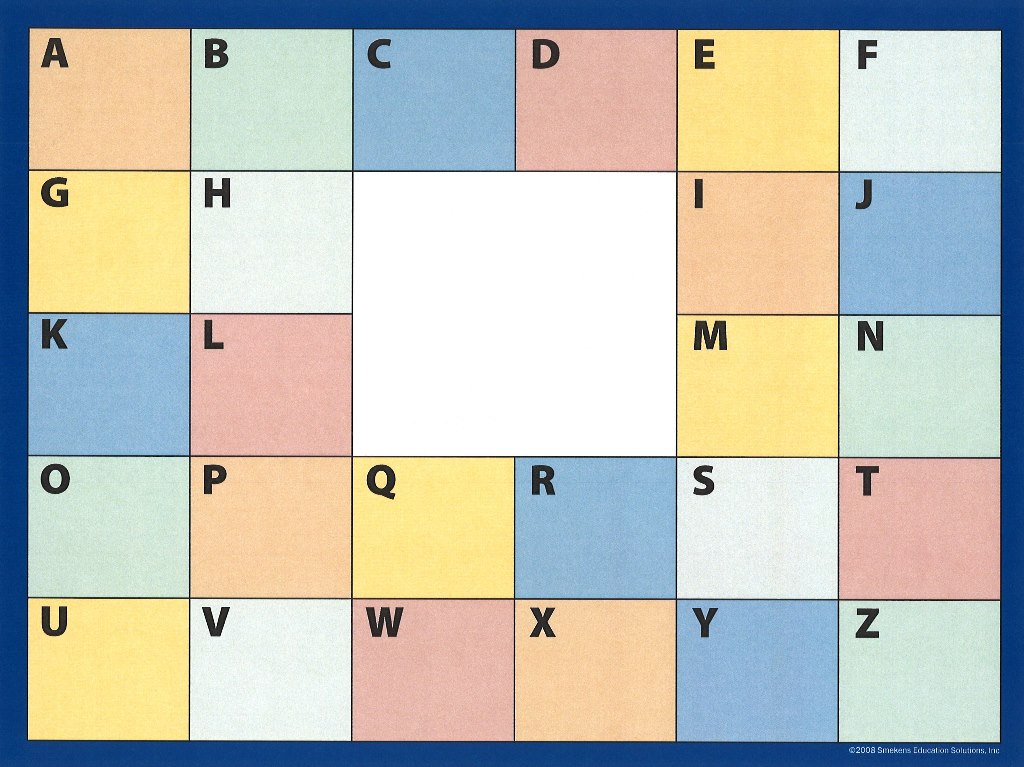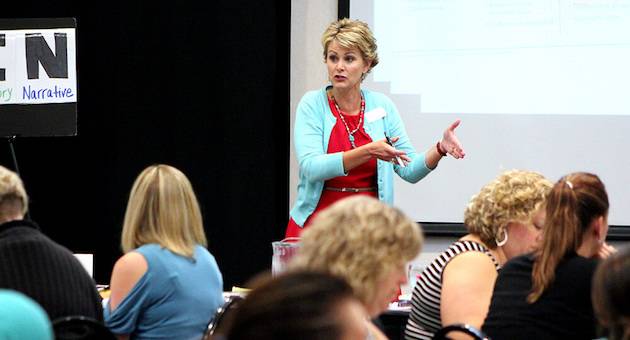9 fun professional development activities for teachers
Provide your teachers with relevant and engaging professional development opportunities.
by Michelle Schweikhardt
Most professionals in a school setting have experienced an impractical or boring professional development meeting at some point in their career. If that sounds familiar, look back on that experience and think about what made it that way. Was it a sit-and-get scenario, impractical information, a boring presenter, or an irrelevant topic?
Admittedly, it is challenging to plan and deliver engaging and relevant PD, but when professional development activities for teachers are focused, useful, and collaborative, educators are more likely to embrace the journey of lifelong learning.
Administrators and PD coordinators have an opportunity to look beyond traditional approaches to PD. Leaders should normalize employing fun professional development activities for teachers to deliver and review relevant professional content.
1. Choice
Choice allows people to have control over their learning and to tailor it to their personal interests and needs. When people have a choice, they are more likely to be engaged in the learning process and to retain the information that they learn. One way to offer ownership is a Choice Board.
A Choice Board is a tool that allows teachers to select how they want to participate in professional learning. Usually in the form of a grid, a Choice Board lists 4-12 different professional development activities for teachers to choose from.
Leaders can challenge teachers to choose a specific number of activities, or, if there are enough options on the grid, teachers could be asked to complete the activities of a full row, similar to a BINGO game.
Choice Boards can be presented in a variety of ways, including a digital document such as a Google Doc, Jamboard, a physical board, or simply a sheet of paper. The activities of choice should appeal to a variety of learning styles and align with school and teacher professional development goals.
Options for a Choice Board could include:
-
- reading books or articles.
- watching or creating videos.
- listening to podcasts.
- taking an online course.
- collaborating with other teachers on a project.
- creating lesson plans.
- journaling.
The key to ensuring that a Choice Board is effective is that all choices are aligned to clear learning objectives based on a relevant topic for teachers.
As the Choice Board is being created, consider the resources that will be required to support the varying options. If books, articles, or online subscriptions are involved, have those resources accessible when the Choice Board is shared with teachers.
It’s also important to build in opportunities for participants to reflect upon and synthesize their learning as they prepare for implementation in the classroom. Without this step, teachers lack the specific next steps needed to put what they learned into practice.
Offering choice provides teachers with an engaging, differentiated learning experience where they get to choose the order, pace, and format of their professional development.
Beyond the value of choice in professional development, using this method of learning provides a model for how teachers can apply the Choice-Board tool in their own classrooms to foster student independence and provide differentiation.

FREE ON-DEMAND WEBINAR
Advance Beyond Doing Reading to Teaching Reading
Learn what explicit, whole-class comprehension instruction looks like and how to effectively scaffold mini-lessons within the rest of the reading block to honor the gradual release of responsibility.

Earn a completion certificate
60-minute webinar
2. On-demand learning
Consider the conveniences of on-demand learning. Online videos allow teachers to learn at their own pace as a “just in time” form of professional development. When educators enroll in online courses, workshops, and webinars, they have the flexibility to pursue professional learning at school, at home, or even during their commute. They can also access a wide range of resources that are tailored to their specific needs.
Making professional development more accessible through online platforms allows staff to complete professional development activities at their convenience, which fosters the opportunity for impactful and enjoyable learning experiences. It also demonstrates to teachers that their voices are being heard and their input is valued.
Smekens Education’s webPD subscription, for example, contains more than 300 videos that include practical strategies for teaching reading and writing in grades K-12. With the length of videos ranging between one and 120 minutes, teachers can view a quick tip or take a deep dive.
With online platforms like webPD and the longer courses found in webAcademy, teachers not only have the benefit of convenience, but they can also collaborate with colleagues online and earn continuing education credit along the way.
Keep in mind, on-demand videos can be used as a stand-alone activity or in conjunction with other fun professional development activities for teachers, such as a Choice Board.
Keep people moving
Engaging professional development activities for teachers should be structured around movement and discussion. Educators know that research supports the value of movement with students, but too often leaders forget this principle when engaging adult learners in professional learning.
Just like with K-12 students, when purposeful movement occurs during professional development, adults can better absorb complex information. The lack of purposeful movement during long training sessions can lead to fatigue, distraction, and disengagement.
To inject movement into professional development activities for teachers, try engaging educators by using one of the following methods:
3. Chalk Talk
A Chalk Talk is one of the interactive professional development activities that allows an entire group to simultaneously share their thoughts, brainstorm new ideas, problem-solve issues, and reflect on materials.
What makes a Chalk Talk especially valuable is the fact that it occurs without any talking. The silent factor creates a change of pace and encourages participants to engage in deep thinking independently and as a group.
To execute a Chalk Talk before, during, or after a professional development session, use a chalkboard or whiteboard to share a probing topic, question, or image with the group.
Then, invite participants to use chalk or a dry-erase marker to approach the board and respond to the prompt with their own words. As teachers think through the original prompt, they can list what they know, write comments, ask questions, draw pictures, show connections to ideas, etc.
As responses are added to the board, teachers can interact with previously jotted “Chalk Talk” by adding to, grouping, or labeling other ideas.
If the professional development focus is literacy, for example, some possible Chalk-Talk prompts might include:
-
- The Six Traits of Writing
- The Science of Reading
- Writing in the content areas
- Improving reading comprehension
- Ways to add project-based learning in the classroom
To add a digital twist to a Chalk Talk, consider using Google Jamboard or Padlet to foster group interaction, incorporate media, and express thoughts interactively online.
4. Walk & Talk
A purposeful way to get educators up and moving during professional development is with a Walk & Talk. This activity is powerful, in part, because it engages every participant.
A Walk & Talk can occur before, during, or after teachers listen to a presentation, read a text, or consume information in some other way.
To start, have the entire group stand up and form one large circle in the meeting space. Then have participants pair up with someone nearby.
After pairs have been established, the facilitator then poses a question or prompt for the teachers to discuss. Educators then engage in a conversation with their partners as the entire group walks in the same direction around the perimeter of the meeting space for 1-3 minutes.
When the designated amount of time expires, the facilitator can have educators change partners and then repeat the prompt as participants continue walking and talking.
Or, if the facilitator opts to keep pairs together without switching partners, each 1-3-minute Walk & Talk could focus on a different prompt.
Regardless of how it’s configured, the Walk & Talk strategy is a great way to foster movement while giving participants an opportunity to process their thinking and collaborate with others.
By using the Walk & Talk strategy during professional development, teachers gain firsthand experience with the activity, making it more likely that they will implement this engagement technique in their own classrooms as well.

5. Timed Mingle
When looking for a higher level of engagement and a deeper level of thinking, add a twist to the traditional Turn & Talk strategy.
Identify the discussion topic/question and announce that staff will participate in a Timed Mingle. This starts as a typical Turn & Talk. Then stop the partner discussions and ask teachers to mingle to find a new partner. Then, they Turn & Talk to discuss the same topic/question with someone different. Repeat this process a third time.
With each short conversation, educators are exposed to new perspectives, compare their thinking to their peers, and deepen their own understanding.
While the staff is engaged in the Timed Mingle, the facilitator’s role is to eavesdrop on conversations. The observations made during this time can be used to clarify points or deepen understanding when reconvening the whole group.
The power of this strategy lies in the fact that educators are exposed to a variety of perspectives on a talking point, which can help them to develop their own understanding of that topic.
Fun ways to REVIEW professional learning
The flipside to delivering content is the assessment of learning or review. Purposeful review of professional learning can lead to greater understanding and, ultimately, better implementation. With this in mind, creative content review can be a path to provide fun professional development activities for teachers.
6. Digital assessments
The abundance of digital tools available today makes using an online application to create and deliver interactive review activities a great way to model effective classroom techniques while also assessing the staff’s understanding of a professional learning experience.
Kahoot!, Quizizz, and Nearpod are just some of the great apps that are versatile in format and provide instant feedback and results.

7. The ABC Chart
Sometimes, providing engaging professional development activities for teachers starts with something as simple as an alphabet grid.
Teachers love using Smekens Education’s ABC Chart as a graphic organizer to foster content review in the classroom. This same chart can also be used to help educators recall essential points gleaned from professional learning as well.
Access a free copy of the ABC Chart
PDF | Word | 18×24 poster | Google Slide | Google Jamboard | JPEG (for Smartboard & Promethean)
To utilize the ABC Chart, simply use the center square to write out a topic or prompt. Then use the subsequent letter boxes to brainstorm for details that begin with the same letters.
For example, after a professional development training on the writer’s workshop model, the center box might have the label “Writer’s Workshop.” Then, details associated with letters from the alphabet might include:
A: Author’s Chair, Anchor text
B:
C: Conventions, Conferring
D: “Done” List
And so on
After working through the alphabet, some letter boxes may have multiple details while others may have none. If you have the actual ABC Chart Classroom Poster, it’s convenient to write ideas on sticky notes and then apply them to the poster during the review.
The ABC-Chart activity can be employed with an entire group using one chart. However, with multiple charts, educators can work in smaller groups and then share their completed charts at the end.
8. Walk, Chalk, Talk
An enhanced version of the Chalk Talk, a Walk, Chalk, Talk lends itself well to review by covering topics with numerous facets. This activity is facilitated similarly with the main difference being that there are multiple chart papers (or any other mode for writing) set up in areas for participants to “chalk” their thinking.
To prepare for a Walk, Chalk, Talk, create 4-5 prompts or questions and place them around the room. After reviewing the prompts with staff, direct participants to move around as directed, responding to each prompt using the writing colors assigned to their groups.
During the Walk, Chalk, Talk, the facilitator directs the individuals/groups to move every 4-5 minutes and reviews staff responses in order to guide a final “talk” or discussion.
9. Memory Toss
Similar to a tried-and-true icebreaker game, this simple exercise requires that participants recall what they learned from the professional learning while standing and tossing a ball.
To get the activity started, the facilitator has participants stand and form a circle. (It could be one large circle or multiple smaller ones with 6-8 people each.)
Each group is then provided with a ball and a prompt. The prompt is specifically related to a professional development topic that teachers just completed.
The member of the group holding the ball is the first one to address the prompt. After his response, he tosses the ball to a different member of the group. That person then adds on to the comment stated by the first person.
For example, in a Memory Toss occurring after an introduction to the Six Traits of Writing, the prompt and subsequent dialogue might look like this
Prompt: The Six Traits of Writing
Member 1: The Six Traits of Writing provide a common language for identifying the characteristics of good writing. Member 1 tosses the ball to Member 2.
Member 2: And one of the traits is Ideas. Member 2 tosses the ball to Member 3.
Member 3: And the trait of ideas is the most important trait because it represents what the writing is about.
As the ball is passed around the circle, the objective is that teachers are listening closely so that they can add to the conversation by contributing new (and accurate) information. Each participant adds on to the previous comment by starting with the word “and” or “however.” This process continues until each teacher has had a chance to contribute or until the group has exhausted their knowledge of the prompt.
When schools have highly-qualified, genuinely engaged teachers,
the students are the ones who benefit the most.
Concluding thoughts
With a fresh perspective on how to make professional development fun, it’s important to remember that providing fun professional development activities for teachers may require more creativity and advance planning than the typical PD session.
However, educators are worth the extra effort! After all, when schools have highly-qualified, genuinely engaged teachers, the students are the ones who benefit the most.
Fun activities for students, too—from Smekens Education
Consider the following best-practice activities to provide fun and engaging learning for all students.
Professional Development Services
TEACHER TRAINING

CUSTOMIZED CONSULTING

BOOKS & RESOURCES









